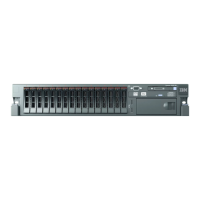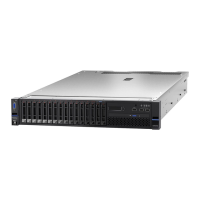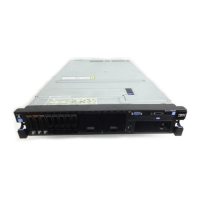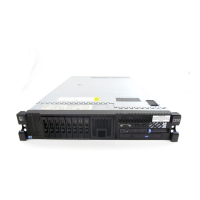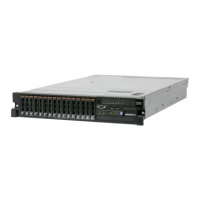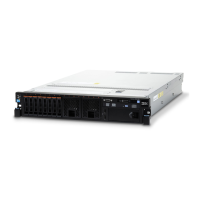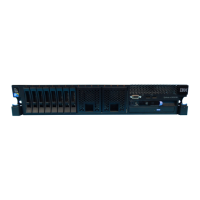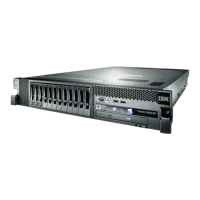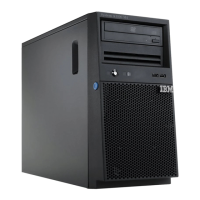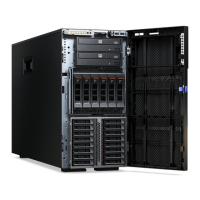1. Turn off the server and disconnect all ac power cords.
2. Check for loose cables in the power subsystem. Also check for short circuits, for
example, if a loose screw is causing a short circuit on a circuit board.
3. If a power-channel error LED on the system board is lit, perform the following
steps; otherwise, go to step 4. See “System-board LEDs” on page 15 for the
location of the power-channel error LEDs. Table 4 identifies the components
associated with each power channel, and the order in which to troubleshoot the
components.
a. Disconnect the cables and power cords to all internal and external devices.
Leave the power-supply cords connected.
b. Remove each component that is associated with the LED, one at a time, in
the sequence indicated in Table 4, restarting the server each time, until the
cause of the overcurrent condition is identified.
Important: Only a trained service technician should remove or replace a
FRU, such as a microprocessor or the system board. See Chapter 3, “Parts
listing, Type 7979 and 1914 server,” on page 79 to determine whether a
component is a FRU.
Table 4. Components associated with power-channel error LEDs
Power-channel
error LED Components
A Fan 4, fan 6, fan 8, fan 9, microprocessor 1, system board
(integrated voltage regulator)
B Fan 1, fan 2, fan 3, fan 5, VRM, IDE CD/DVD cable, IDE
CD/DVD media backplane, microprocessor 2, system board
C ServeRAID SAS controller (8k or 8k-l), DIMMs, tape power
(connector J100), system board
D Low-profile PCI Express adapter (PCI slots 3 and 4), adapter on
PCI riser card (PCI slots 1 and 2), system board
c. Replace the identified component.
4.
Remove the adapters and disconnect the cables and power cords to all internal
and external devices until the server is at the minimum configuration that is
required for the server to start (see “Solving undetermined problems” on page
76 for the minimum configuration).
5. Reconnect all ac power cords and turn on the server. If the server starts
successfully, replace the adapters and devices one at a time until the problem is
isolated.
If the server does not start from the minimum configuration, replace the components
in the minimum configuration one at a time until the problem is isolated.
Solving Ethernet controller problems
The method that you use to test the Ethernet controller depends on which operating
system you are using. See the operating-system documentation for information
about Ethernet controllers, and see the Ethernet controller device-driver readme file.
Try the following procedures:
v Make sure that the correct device drivers, which come with the server, are
installed and that they are at the latest level.
v Make sure that the Ethernet cable is installed correctly.
Chapter 2. Diagnostics 75
